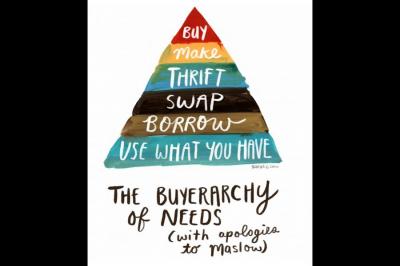Kyra Simone
Special to The Lake Report
Garbage collection is changing in Niagara. If you kick-start your recycling habits now, you’ll be prepared for Oct. 19 when trash pickup moves to alternate weeks.
Recycling and green bins will still be collected weekly, but this is a good time to reconsider your approach to waste.
In Niagara Region, half of our garbage bags contain recyclables and compostables. What’s more, careful sorting does not always mean containers and paper are recycled.
Little oversight throughout the recycling process and large-scale sorting errors make curbside bins a last resort rather than a guaranteed solution.
Why Can’t We Just Recycle?: Unfortunately, putting waste in the right place does not guarantee a green outcome.
After it leaves the curb, recycling in Canada is not well accounted for. Once collected, recycling is sold to facilities that convert it into new packaging.
However, this only occurs if a market exists for the material. If there is no demand or the recycling is contaminated, undesirable recycling may be sent to a landfill or burned.
Recycled plastics are almost always “downcycled.” Unlike glass, hard plastics cannot be remade into containers of the same quality.
Plastic containers are often reborn as inferior textiles or films. The next step for these is probably the landfill.
Most of Canada’s recycling used to be exported to Asian countries but as these facilities became overwhelmed, only high-value materials were recycled while other plastics were incinerated.
In 2018, China banned imports of more than 20 different materials. Malaysia, India, Taiwan, Vietnam and Thailand have also since restricted plastic imports.
These restrictions were partly established because North American recycling shipments are often contaminated.
Contamination includes obvious errors, including dead animals or medical waste in recycling bins. But more commonly, individuals contaminate recycling by including items they incorrectly believe to be recyclable.
In Toronto, up to 25 per cent of materials put in the recycling are considered contamination.
Food residue is also a form of contamination. For example, containers (yogurt, salsa, etc.) must be rinsed before they can go in the blue box.
Paper products with residue are not recyclable and should be composted. These include grease-stained pizza boxes and paper napkins.
It is important not to recycle “optimistically.” Luckily, the Niagara Region’s searchable What Goes Where guidelines (www.niagararegion.ca/waste) take the guesswork out of putting any item into a waste bin.
Start at the source: Household waste is closely tied to shopping habits. “Going zero-waste” is gaining traction as an accessible way to reduce pollution right at home.
It can seem difficult, but a zero-waste lifestyle does not mean collecting garbage from a whole year in one mason jar. It’s about small shifts in everyday actions to reduce your environmental footprint.
To start, it helps to buy new items only as a last resort. Second-hand alternatives conserve the energy otherwise needed to manufacture and ship new products.
Sarah Lazarovic’s “Buyerarchy of Needs” illustration is also an excellent framework that leads to greener shopping decisions.
Area vendors and Niagara farmers’ markets are a good way to source products without excessive packaging and shipping footprint.
There is also a “Buy Nothing” Facebook group for Niagara-on-the-Lake! This caring group of neighbours reduces waste by rehoming items within NOTL.
While our recycling bins may be part of the problem, it’s exciting that Niagara can work together toward a solution.
Kyra Simone is a NOTL-born nature lover with a master’s degree in biology. In her spare time, she advocates for sustainable change, picks up garbage, makes recycled jewelry, and transforms furniture bound for the landfill.







